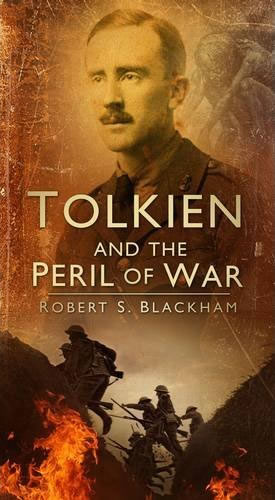Tolkien and the Peril of War by Robert S. Blackham (26.09.11 by Pieter Collier) -
Comments
The latest book by Robert S. Blackham, Tolkien and the Peril of War, charts Tolkien’s life from 1914 to 1918, using old postcards, maps and photographs to paint a picture of the places and times that relate to one of the leading authors of the twentieth century.
J.R.R. Tolkien joined the army in 1915 and trained in Bedford and Brocton Camp on Cannock Chase while his wife lived in the village of Great Haywood, close to the camp.
A number of the places in and around Great Haywood were destined to appear in his later works. In 1916 Tolkien learnt of the death of two of his school friends in the bloody Battle of the Somme.
He contracted Trench Fever in late October 1916 and returned to Birmingham, his hometown, by hospital ship and train.
The final part of the book covers his time in England, an era in which he was blighted by illness. Richly illustrated, this fascinating volume is an essential purchase for tolkien-lovers everywhere.
This book follows the same style als the other two books by Blackham and using pictures takes us back in time and portays the perils of war and makes us remind the horrors of war. Another book I add to my collection.
Author: Robert S. Blackham
Publisher: The History Press Ltd
Publication Date: 1 September 2011
Type: paperback, 144 pages
ISBN-10: 0752457802
ISBN-13: 978-0752457802
Other books by Robert S. Blackham
tolkien's Oxford charts tolkien's life in Oxford from 1911 to 1973, using old postcards, maps and photographs to paint a picture of the places and times that relate to one of the leading authors of the twentieth century.
The book covers such places as The Bird and Baby, where the Inklings met to read passages from their work; the Old Ashmolean Building on Broad Street where Tolkien worked on the Oxford English Dictionary; the University Botanical Gardens opposite Magdalen College, which contained tolkien's favourite tree under which to ponder; and the Wolvercote Cemetery where Tolkien was finally buried, with his wife, in 1973.
The Roots of tolkien's Middle Earth is an exploration of many of the places in Birmingham, which would later appear in tolkien's writings and how, often by a miracle, many of them survived (e.g. the Shire Country Park).
J.R.R. Tolkien, creator of the fictional world of Middle Earth and arguably one of the most influential writers of the twentieth century, grew up and spent his formative years in the suburbs of Birmingham.
His memories of the area were later to become a valuable source of names, images and settings for his literary creations, now immortalised for millions in "The Hobbit and The Lord of the Rings".
Robert Blackham, a keen student of the books and member of the Tolkien Society, has brought together a fascinating collection of images, contemporary and modern, of tolkien-related sites in Birmingham. Some are well known but many are new and original speculations.
Spread the news about this J.R.R. Tolkien article:
